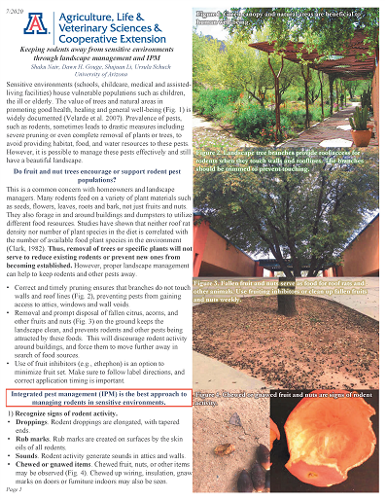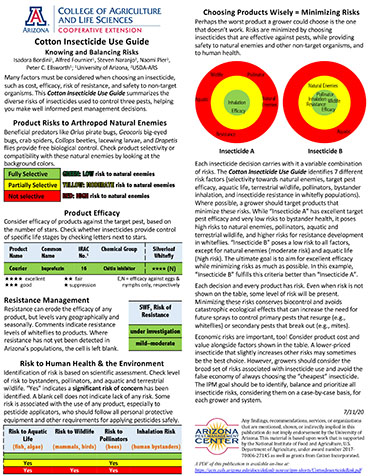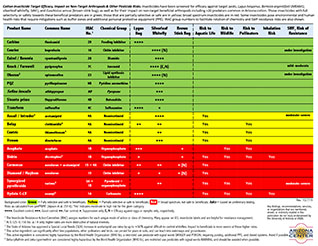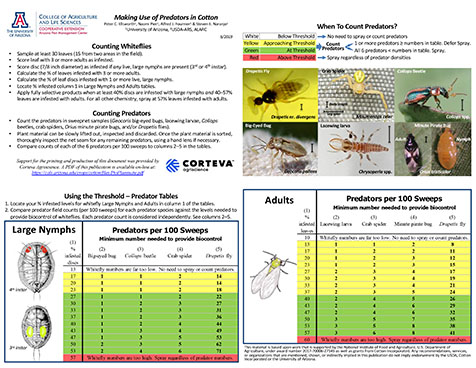-
Sep 2023The Western grapeleaf skeletonizer is an important pest of grapes in Arizona. With the increase in acreage under grapes in the state, there is need for resources to help growers in managing important pests. This IPM Short provides concise information on identification and management of this pest.
-
Dec 2022
Agaves are beautiful and hardy desert plants, that have a conspicuous presence in Arizona landscapes. They are especially valued for their diversity of forms and colors. Agaves face relatively few pest problems, compared to other landscape plants. The most significant pest is the agave snout weevil, Scyphophorus acupunctatus. Another important, but often overlooked pest is the agave mite or grease mite, Oziella sp. The other tiny bug that scurries around on the agave leaves often goes unnoticed. These minute insects are agave plant bugs. They are easier to detect and cause less damage compared to the other two pests, but can sometimes become a problem.
-
May 2021
Palmer amaranth (careless weed or pigweed) is a plant native to the desert southwest that has developed resistance to multiple herbicide mechanisms of action (MOAs). In multiple crops, in all major Arizona agricultural areas, Palmer amaranth resistant to glyphosate and ALS inhibitors (e.g., Staple®) can be found. A diversity of control tactics are needed to manage herbicide resistant Palmer amaranth.
-
May 2021
The Pecan Bud Moth, a species of leaf roller moth, has recently been observed in southeastern Arizona pecan orchards. This is the first time growers have reported this pest and expressed concerns about potential impacts to the crop. This rapid communication is designed to provide what we know about this potential pest. Growers are encouraged to review this information with their pest control advisor to determine what action, if any, is required.
-
Apr 2021
A mirid plant bug has been observed in high numbers on the catkins of some central Arizona pecan orchards. Multiple growers report this for the first time and have expressed concerns about potential impacts to the crop. This rapid communication is designed to provide the limited knowledge we have about this potential pest. Growers are encouraged to review this information with their pest control advisor to determine what action, if any, is required.
-
Jul 2020This publication is the Spanish-language translation of the IPM Short, Protecting your Flocks from External Parasites - Mites and Lice.
-
Jul 2020External parasites, such as mites and poultry lice, are common pests on birds, especially in backyard chickens. They feed on the blood and bite skin, feathers, or scales of the bird. A heavy infestation of these pests can result in poor poultry health, reduced growth and egg production, and sometimes can even cause bird deaths. This article provides basic information on how to recognize the signs and symptoms of an infestation, and how to effectively treat infested birds.
-
Jul 2020Cicada killer wasps, known for capturing cicadas to feed their young, pose no threat to humans, but can sometimes be confused with the Asian giant hornet that has become an invasive species found in North America including Washington State and British Columbia.
-
Jul 2020This article describes how to manage rodents effectively and still have a beautiful landscape through IPM.
-
Jul 2020Many factors must be considered when choosing an insecticide, such as cost, efficacy, risk of resistance, and safety to non-target organisms. This Cotton Insecticide Use Guide summarizes the diverse risks of insecticides used to control three pests, helping you make well informed pest management decisions.
-
Jun 2020Cotton insecticide target efficacy, impact on non-target arthropods and other pesticide risks.
-
Jun 2020La guía del inspector acompañante para “Making Whitefly & Predator Counts”. Esta guía portátil proporciona instrucciones para el muestreo de mosca blanca y predators. La tablas proporcionan una guía para tomar decisiones sobre cuando fumigar para manejar eficazmente mosca blanca. Disponible tanto en inglés como en español.
-
Jun 2020La guía del inspector acompañante para “Making Whitefly & Predator Counts”. Esta guía portátil proporciona instrucciones para el muestreo de mosca blanca y predators. La tablas proporcionan una guía para tomar decisiones sobre cuando fumigar para manejar eficazmente mosca blanca. Disponible tanto en inglés como en español.
-
May 2020Cotton fleahoppers are present in cotton during early squaring but rarely require chemical control. These piercing-sucking pests feed on small squares and new terminal growth. Cotton at early squaring is at risk for losing fruiting sites due to blasting of small squares, which can delay timeliness of fruiting, however, yield loss is rare.
-
Apr 2020False chinch bug nymphs, not adults, contribute to significant early-season stand loss in cotton. Best management practices include timely removal of weeds from surrounding fallow or wasteland areas. Chemical control of nymphs should only be considered during mass migrations when abundant false chinch bugs occur per plant, only where they are entering the field plus 50 feet further into the field, and usually only as a banded application over the crop.
-
Mar 2020A collection of resourced for parents, teachers and others to use for in-home education during school closures.
-
Mar 2020As the weather warms up, residents in Arizona start to notice giant insects landing or flying around our homes or offices. People call them giant mosquitoes, but these gentle giants are not mosquitoes at all. They are actually crane flies and are harmless.
-
Mar 2020This document describes IPM for wild honey bees in community environments.
-
Oct 2019
The Arizona Pest Management Center uses scientific data and feedback from grower communities to develop comments that inform Environmental Protection Agency (EPA) pesticide registration decisions. Our analysis shows that a high percentage of our comments provide substantive information that influence registration outcomes.
-
Jun 2019The companion visor guide to “Making Whitefly & Predator Counts”. This portable guide provides instructions for sampling both whiteflies and their predators. Tables provide a guide for making spray decisions to effectively manage whiteflies. English version.


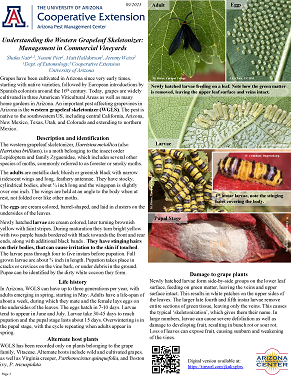

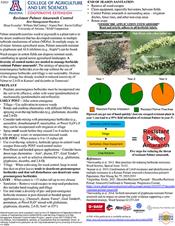
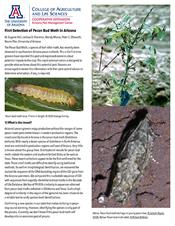
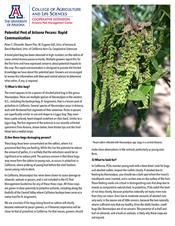
-(002)_page_3.jpg?sfvrsn=cda1d0dc_0?size=300)


